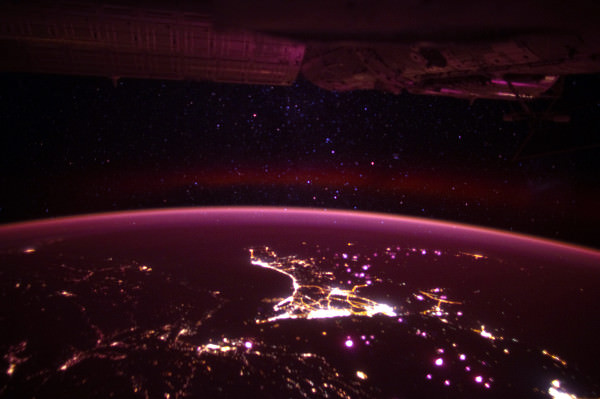[/caption]A beautiful and peaceful Christmas-time picture of The Strait of Hormuz was shot from the International Space Station (ISS) soaring some 250 miles (400 kilometers) overhead on Christmas Eve, 24 Dec 2011.
Today, the economically vital Strait of Hormuz is a ‘Flashpoint of Tension’ between Iran and the US and much of the rest of the world community because of official threats by Iranian government officials to shut the highly strategic waterway to crude oil tankers that transport the lifeblood of the world’s economy.
The timely image above was just tweeted by NASA Astronaut Ron Garan who wrote; “Interesting peaceful pic of the #StraightofHormuz #FromSpace taken on Christmas Eve (12/24/11) from the #ISS”. Garan served aboard the ISS from April to September 2011 as a member of the Expedition 27/28 crews.
The Strait of Hormuz lies at the mouth of the Persian Gulf between Iran and the Arabian Peninsula and is a major chokehold of the world’s energy consumption.
At its narrowest point, the Strait is only 34 miles (54 kilometers) wide. The vital shipping lanes span barely 2 miles (3 kilometers) in width in each direction (see maps below).
See more ISS photos of the Persian Gulf region and the Strait, below.
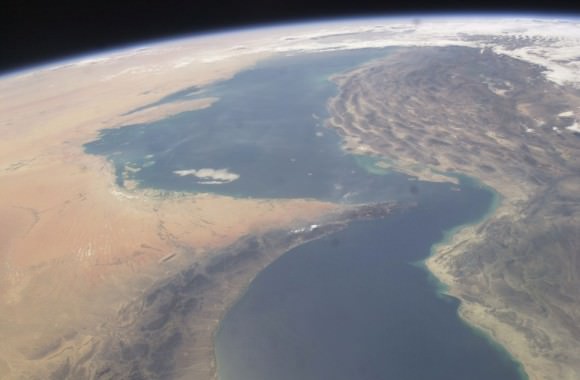
Taken from the International Space Station on Sept. 30, 2003. United Arab Emirates, Oman and Saudi Arabia at left, Iran at right. Credit: NASA
Each and every day, about 20% of the world’s daily petroleum consumption is shipped through the extremely narrow channel on gigantic Oil tankers. Any disruption of petroleum shipments would instantly send crude oil prices skyrocketing to exhorbitant levels that could wreak havoc and rapidly lead to a worldwide economic depression and a devastating war between Iran and the US and its allies.
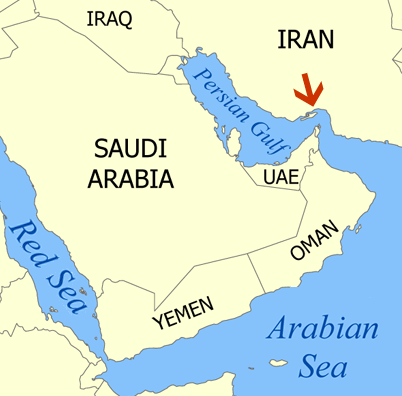
In recent days Iranian boats have approached US Naval warships at high speeds while they were heading through the Strait of Hormuz – playing a potentially deadly game of cat and mouse that could spin out of control in a single misstep, even if unintentional.
Clashes would easily disrupt the crude oil tanker shipping traffic.
Several Iranian speedboats came within about 800 yards of the US vessels in recent days as a war of words has flared over oil and Iran’s nuclear program as tensions escalate.
Video Caption: Iranian speedboats closely approach US Navy ships at high speed in the Strait of Hormuz on Jan. 6, 2012. Credit: US Dept of Defense
The US and allied fleet operates in the Gulf region to protect the oil shipments and the oil installations of a number of Arab countries including Saudi Arabia.

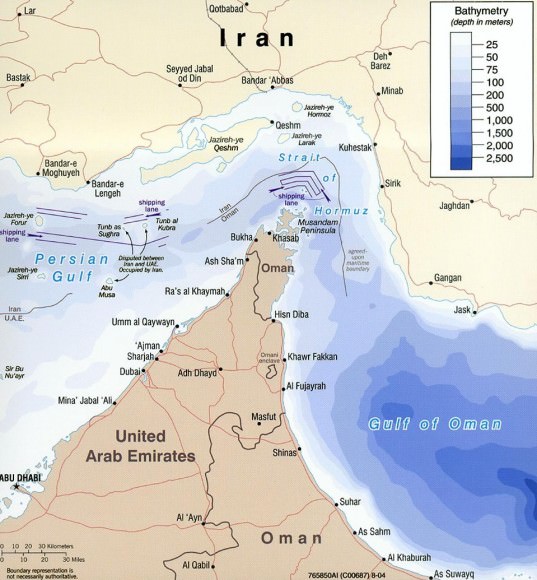
An international crew of six men from the US, Russia and Holland are currently in residence aboard the ISS running science experiments.
ISS Expedition 30 Commander and US astronaut Dan Burbank snapped gorgeous photos of Comet Lovejoy during this Christmas season – look here.
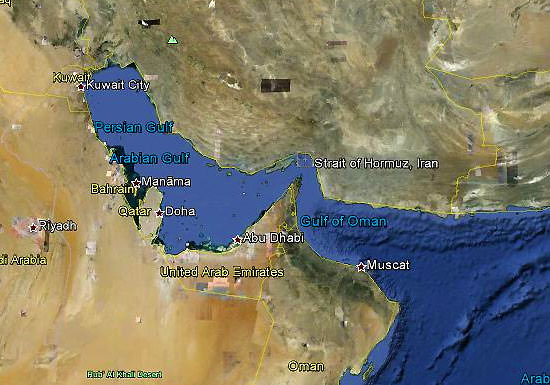
Look here for dazzling photos of the ISS crossing the Moon – shot just days ago from NASA’s Johnson Space Center in Houston
Read Ken’s recent features about the ISS here:
Dazzling Photos of the International Space Station Crossing the Moon!
Solar Powered Dragon gets Wings for Station Soar
Absolutely Spectacular Photos of Comet Lovejoy from the Space Station
NASA announces Feb. 7 launch for 1st SpaceX Docking to ISS

